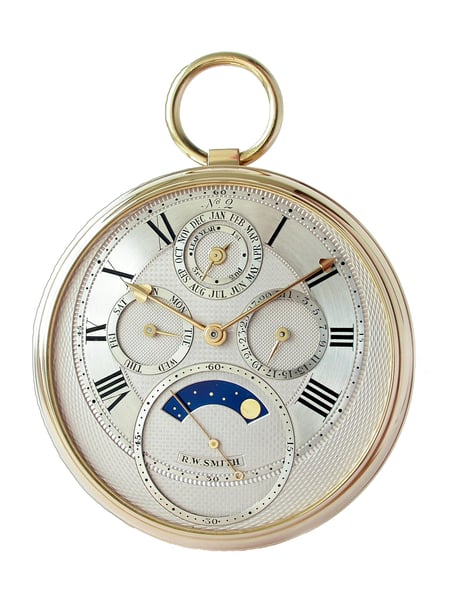The record for the most expensive British timepiece ever sold has just been set by Sulby watch-maker Roger Smith.
His pocket watch sold for $4.9 million in a New York auction, which surpasses the previous record, set by George Daniels, which sold for just under $4.1 million.
Ahead of the auction Roger’s second pocket watch had toured the world, being shown to enthusiasts in London, Los Angeles, Geneva, Hong Kong and New York.
It had been estimated to sell for $1 million.
The famed Sulby watch-maker spent five-and-a-half years making this second pocket watch in a bid to gain the approval of George Daniels, one of the most well-known horologists of the 20th century.
Roger had spent 18 months making his first pocket watch, which he showed to George Daniels with the hope of becoming his apprentice, but was told it looked handmade and to start again.
It was his second pocket watch that received the approval of George Daniels.
It featured a perpetual calendar and tourbillon with spring-detent escapement (a mechanism to counter the effects of gravity and to increase accuracy).
When George saw this second watch he said: ‘You are now a watch-maker.’
Having built the watch in 1998, it stayed in Roger’s kitchen drawer for years.
It was in 2004 when he sold it to raise funds to start his own workshop.
Roger Smith watches are unique as they are built from scratch, with each component, of which there are up to 250, being designed, drawn out, tested, prototyped and toleranced, before the manufacturing process can begin.
As such there are only 130 watches under his name.
He has made three pocket watches, the first of which he disassembled, and the third which has remained in a private collector’s possession.
Roger Smith said: 'Ahead of the auction, there seemed to be an enormous amount of interest in Pocket Watch No.2 but, for the watch to set a record price at this level, was beyond everybody’s expectations.
'It certainly represents a major milestone in my own journey but I also hope it is a meaningful statement for British watchmaking too.'



.jpeg?width=209&height=140&crop=209:145,smart&quality=75)

Comments
This article has no comments yet. Be the first to leave a comment.